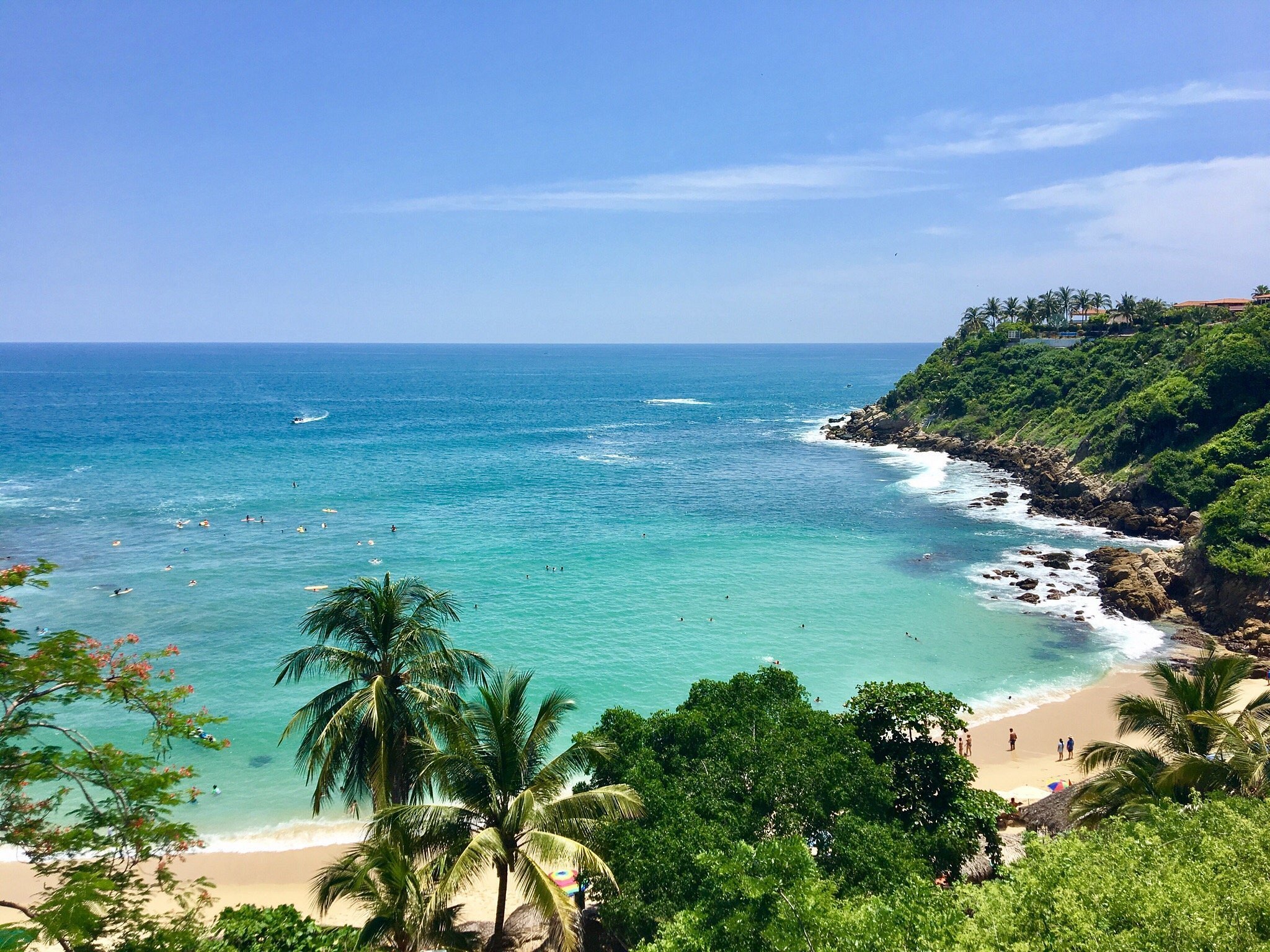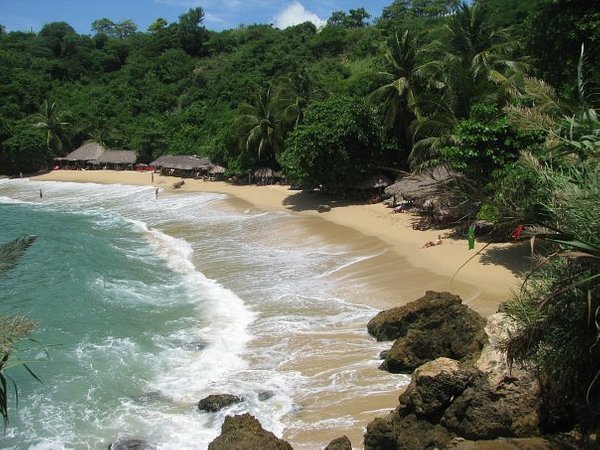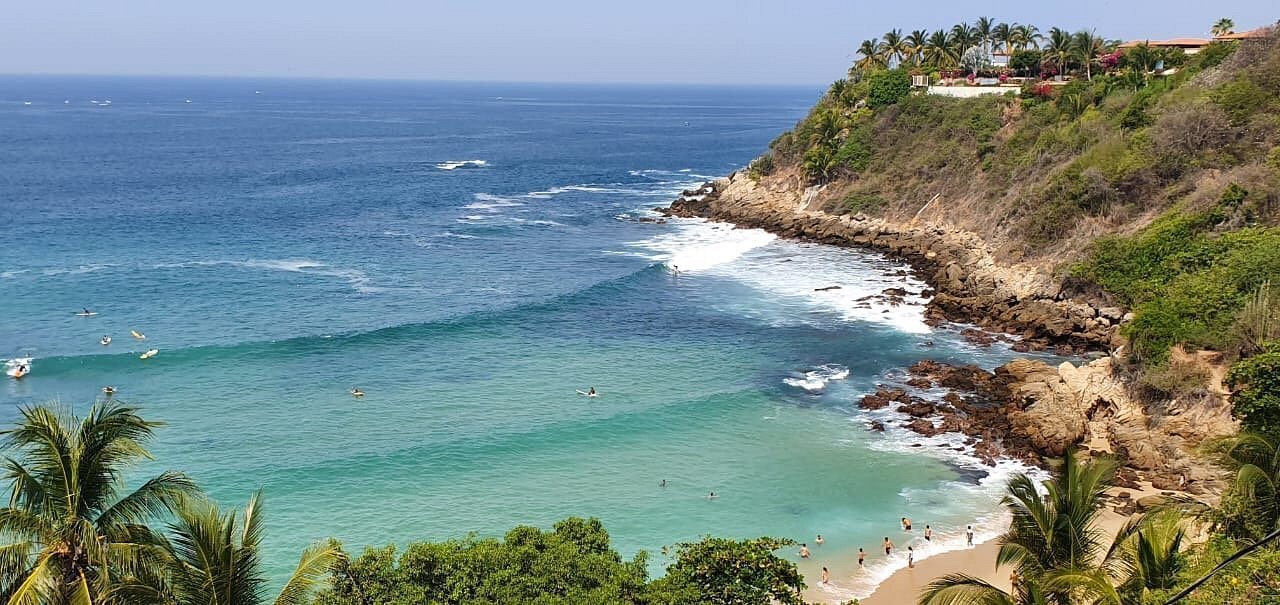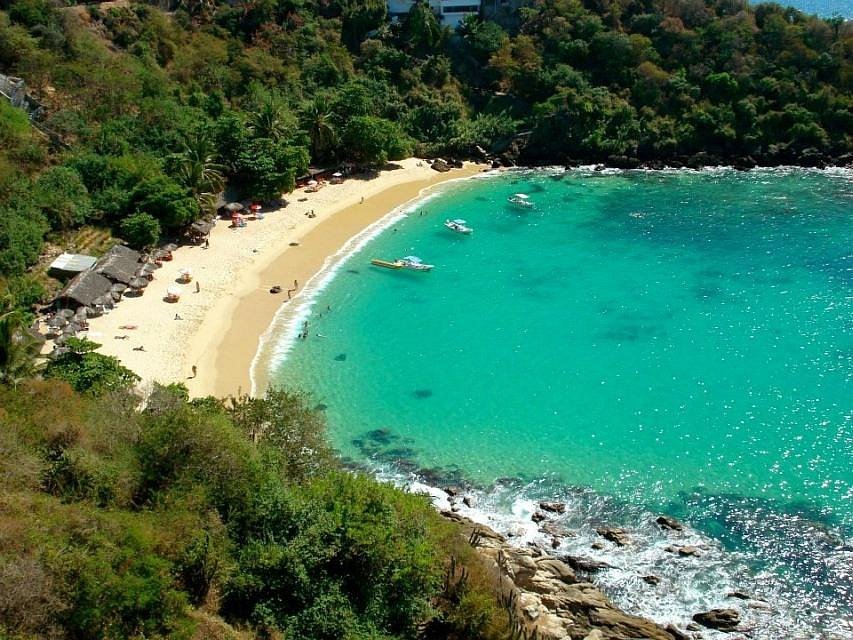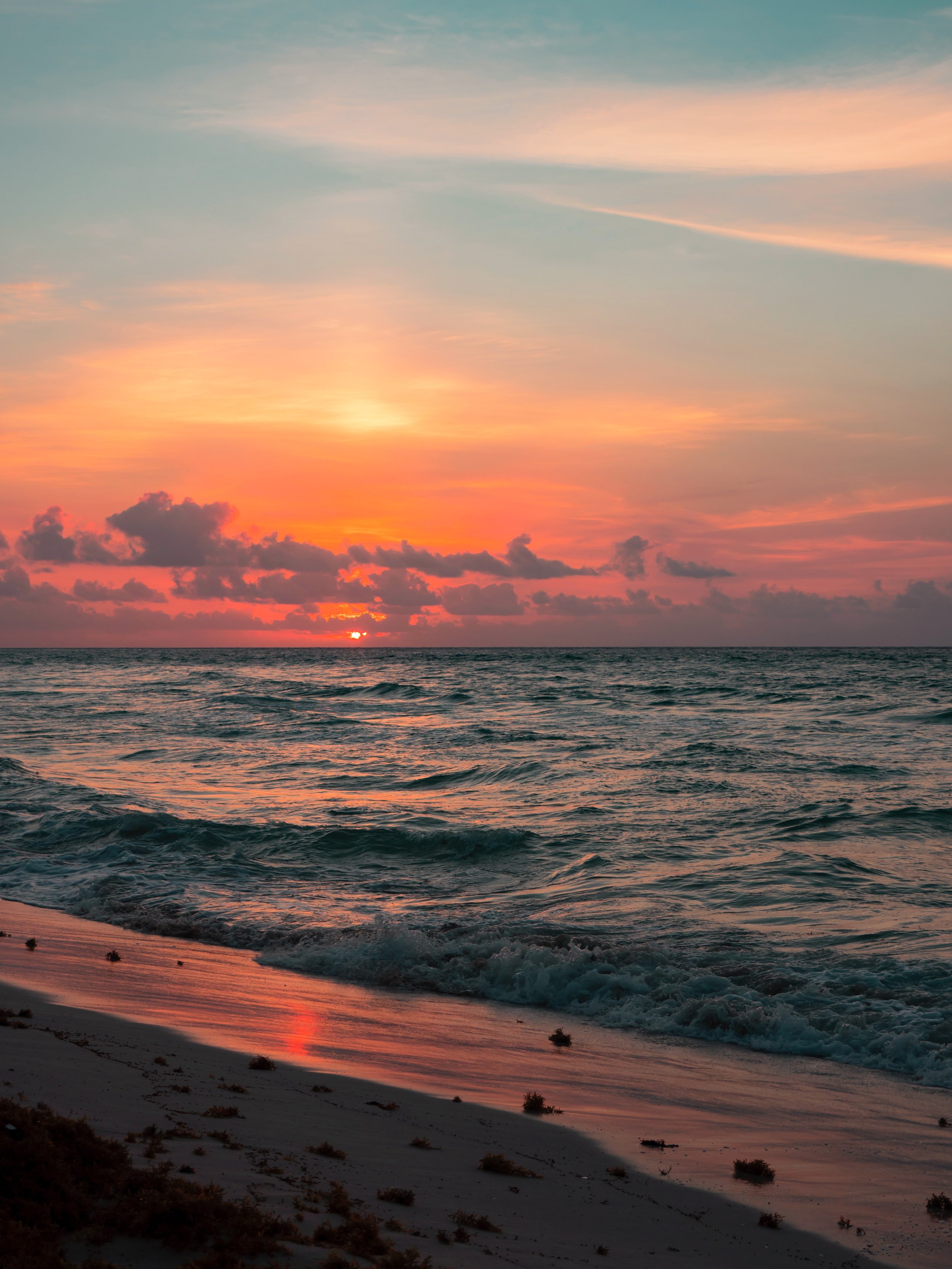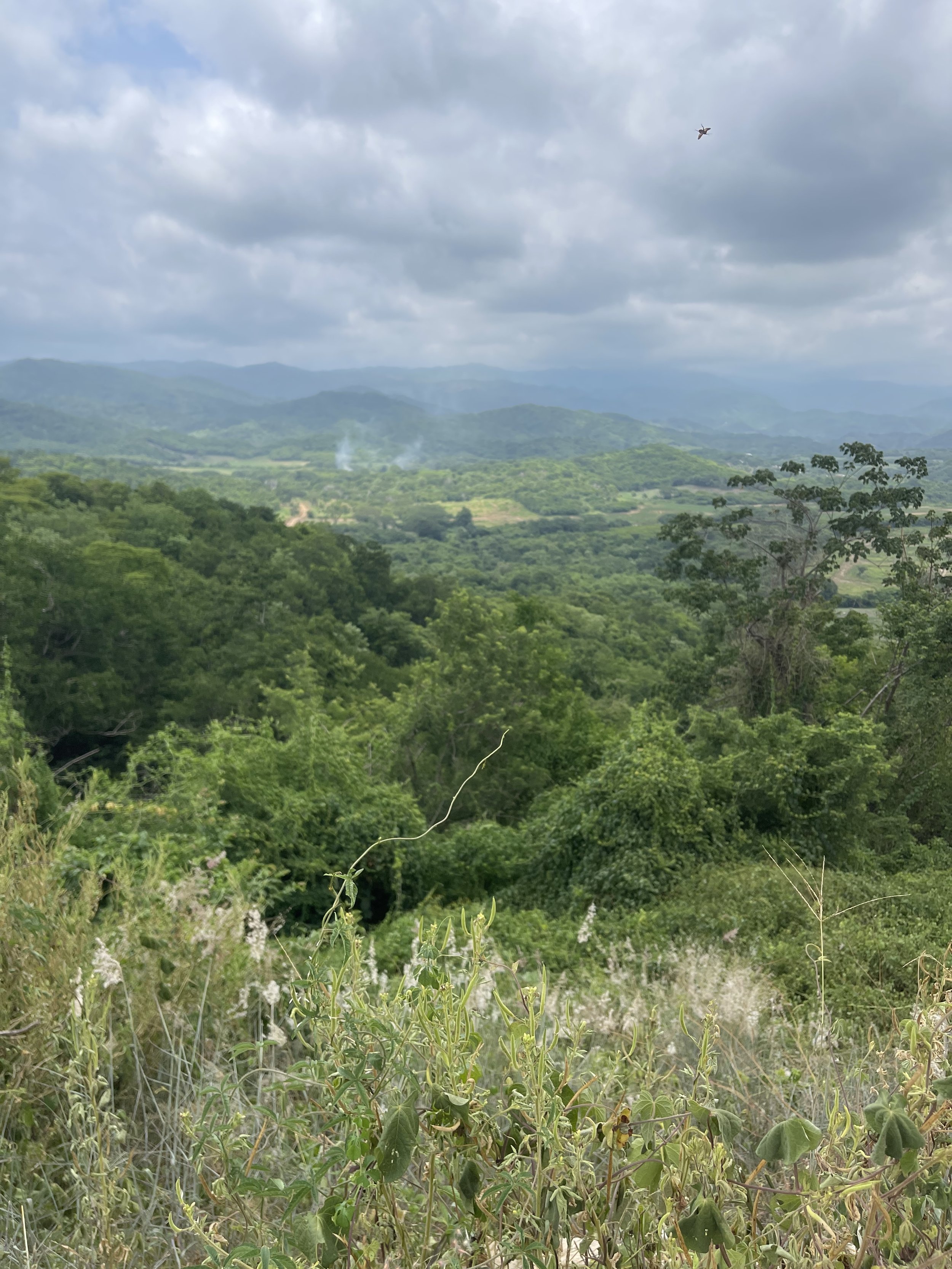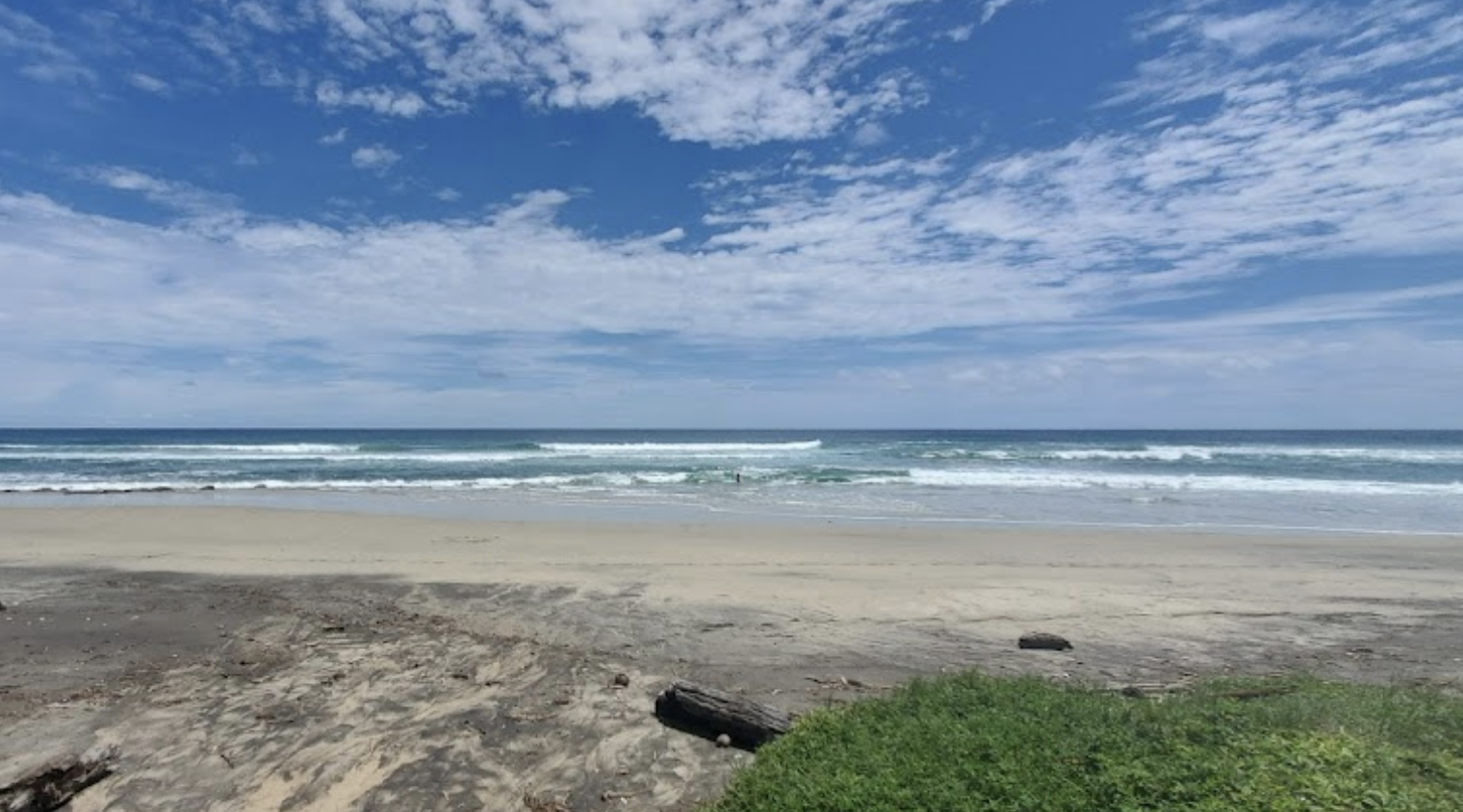Puerto Escondido, Oaxaca, Mexico
Puerto Escondido is a popular tourist destination on the Oaxacan coast. It caters to a more casual and eclectic clientele than neighboring Huatulco, with the majority of visitors being surfers, backpackers, and Mexican families.
The beaches are the main attractions: Zicatela Beach hosts major surfing competitions, while other beaches have gentle waves. Fishing and birdwatching are popular in a large lagoon area west of town.
Puerto Escondido is primarily located in the municipality of San Pedro Mixtepec on Oaxaca's western coast, also known as the Emerald Coast. Its bay is surrounded by a series of rocky cliffs that range in height from 15 to 30 meters. The town center is located on the bay's north side. The climate is tropical and humid, with an average annual temperature of 28 degrees Celsius (82 degrees Fahrenheit) and a rainy season in the summer.
Puerto Escondido is the region's oldest tourist attraction and the main hub of tourist activity for both nationals and foreigners. Zicatela Beach's large waves place it among the top five surfing destinations globally. The port continues to support commercial fishing, and it also attracts people interested in deep-sea fishing (esp. for sailfish).
Because there are only domestic flights, Puerto Escondido is not as well-known or visited as other beach resort areas such as Acapulco or Cancun. Buses from Oaxaca's capital take seven hours to descend the Sierra del Sur mountain range via hairpin turns. The majority of the bus terminals from Oaxaca are located downtown.
Puerto Escondido is mostly rustic and downscale, with many small and medium-sized hotels and restaurants, but there are a few upscale hotels. The majority of the cuisine is based on seafood and native plants, which include eleven varieties of banana, chocolate, and coffee. It also has a few Italian restaurants run by recent Italian immigrants.
Pérez Gazga Avenue, also known locally as "El Adoquin" or "La Zona Adoquinada," is the tourist center of Puerto Escondido (the paving stone street). Bars, hotels, cafes, restaurants, nightclubs, craft shops, Internet cafes, corner stores, tour operators, and scuba diving rentals can be found beginning with a statue of Benito Juarez. It also serves as a promenade, running parallel to the town's main beach, and is pedestrian-only after 17:00. It is packed with locals and tourists at night. This is one of the best places to buy Mexican handcrafts, particularly those from Oaxaca, such as loose-fitting blouses, shirts, vests, wraps, tapestries, handbags, bags, jackets, hammocks, carved stone jewelry, silver, and seashell items.
The main market in the town center, on the other hand, has competitive Mexican prices. Coastal Highway 200 is located above the Adoquin, away from the beach.
The Andador Escénico (Scenic Walkway) is a network of paths, stairs, and bridges that begin at the town's main beach and wind their way through rocky oceanside cliffs, passing beneath the lighthouse to a lookout called Sueño Posible (Possible Dream). The walkway is very close to the ocean in some places and gets wet from the waves.
Every year, the city celebrates Carnival, which begins with the "quema de mal humor," or bad mood burning. This is done with an effigy in order to rid the people of negative thoughts and moods so that they can enjoy the festivities.
The Beach
Puerto Escondido's main attractions are its internationally recognized beaches.
Divers are drawn to the area because of the variety of fish, large oysters, lobsters, and manta rays. Although the Mexican Pacific Coast generally runs north-south, this stretch of coast in Oaxaca runs east-west, with Playa Zicatela on the eastern end.
Puerto Escondido became well-known for the annual surfing competitions held at Zicatela Beach in November. The competition attracts competitors from all over the world. The wave that breaks on Zicatela Beach attracts an international crowd of surfers, bodyboarders, and their entourages due to its similar power and shape to the Banzai Pipeline on Oahu's North Shore. Mid to late summer is a low season for tourists but a high season for waves and international competitions. A number of international competitions have taken place here, including the ESPN X Games and the MexPipe Challenge.
This beach is separated from the others by "El Morro," a rocky outcropping (the nose). The beach is 50 to 100 meters wide and four kilometers long, with waves up to sixteen meters high. Lifeguards are stationed at both this high-risk beach and the other beaches. Approximately half of these are professionals, while the other half are volunteers. Zicatela is still a surfers' beach, with the strong rip current making swimming impossible. The Zicatela Beach tourist district caters to surfers, including surfboard rental specials. The beach now has a promenade that is landscaped with flowers and shrubs along the restaurants, many of which are new.
Playa Marinero is located west of Zicatela, over the El Morro rocky outcrop, and is the best beach for swimming due to the lower surf and rip currents. There is some surf, but it is gentle enough for beginners and bodyboarders.
Playa Principal, or the main beach, is located west of Playa Marinero and faces the town proper. Boats and water taxis are anchored close to the beach. Fishermen arrive early in the morning to sell their catch to local restaurants and families. It has a length of 500 meters, fine gray sand, and low to moderate surf. This is the primary location for tourists to hire boats that take them to otherwise inaccessible beaches, to see porpoises and marine turtles, or to go deep-sea fishing. This beach is also popular with Mexican families for picnics and soccer games.
The lighthouse is located west of the Playa Principal, with a stone walkway, Andador Escénico, beneath it. A short distance west of the walkway are the twin beaches of Puerto Angelito and Manzanillo, separated by a small rock outcropping. These are located in a sheltered cove, making swimming safe, with Manzanillo having slightly more surf. Angelito Beach has a number of small, family-run restaurants housed in palapas (open-air thatched structures). The water on these beaches ranges in color from emerald green to turquoise blue. Puerto Angelito is usually crowded and frequented by busloads of tourists. Because there is no road access to Playa Manzanillo, it is quieter.
Playa Carrizalillo, located west of these beaches, has white sand and cobalt blue water with a light green edge. This 300-meter (980-foot) wide beach is located in a small bay. This beach has no vehicular access, and the footpath descends a steep slope on a recently installed rock stairway. It takes about fifteen minutes to walk from town to here. Another way to get to Carrizalillo is to take a water taxi from Playa Principal. Waves are typically gentle, with the exception of a zone that opens directly onto the ocean and has waves large enough for surfing. Because of the difficult access, the beach is not as crowded with walking vendors as Puerto Angelito Beach. There aren't many restaurants here, and the neighborhood is generally cleaner. The bay's east and west sides have rocky outcroppings that provide habitat for a variety of fish and coral, making it popular for snorkeling. The Rinconada, a former landing strip near Carrizalillo, is now lined with restaurants, salons, and shops. It also has a lending library run by an expatriate-run local charity.
Playa Bacocho is the westernmost beach, with upscale beach clubs. It has fine, soft sand, palm trees, warm, blue-green water, and a moderate surf, though the far west end of the beach can be subject to a strong rip current. It faces southwest and provides excellent sunset views. There are still undeveloped beaches west of Bacocho.
Transportation
Flights to Oaxaca, Monterrey, and Mexico City are available from Puerto Escondido International Airport.
Commercial buses from Oaxaca City take about seven hours.
The new three-lane superhighway (supercarretera) from Oaxaca is making its way to Ventanillas, Oaxaca, about 13 kilometers east of Puerto Escondido, where it will connect with the old coastal Highway 200. The current completion date was in 2021. This will more than cut the travel time from Oaxaca in half.
Investor’s destination
Given the low Mexican peso, Mexico's extremely low property taxes, a significant increase in tourism, and a surge in condos, rentals, and hotels, Puerto Escondido is an excellent place to invest right now. This is only confirmed by the very promising forecast for Mexico's already strong economy in the coming years.


